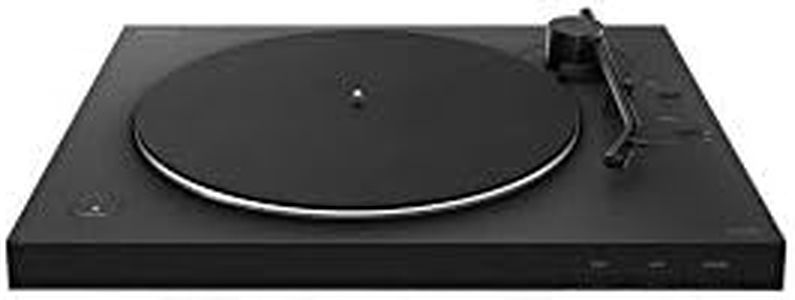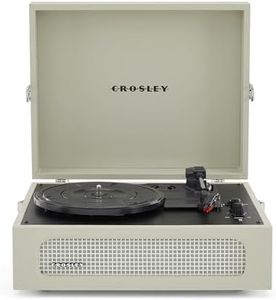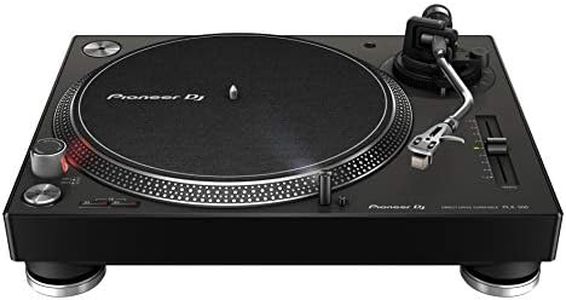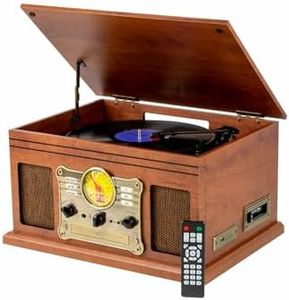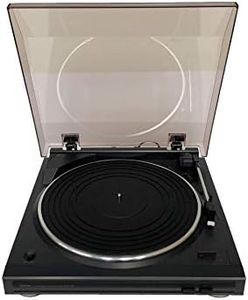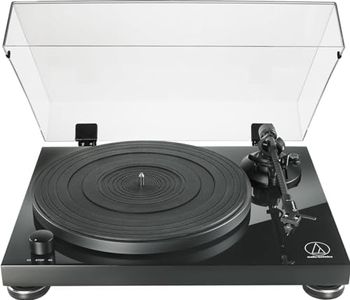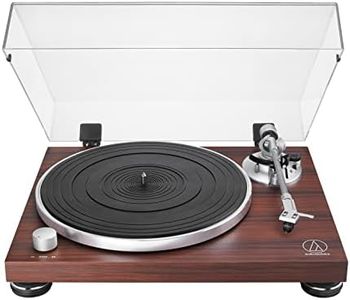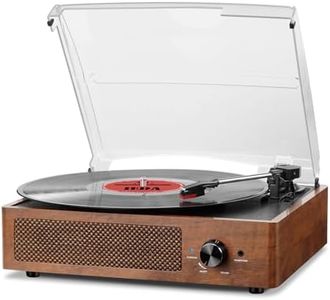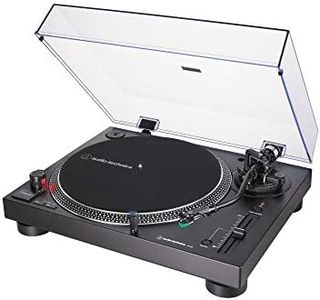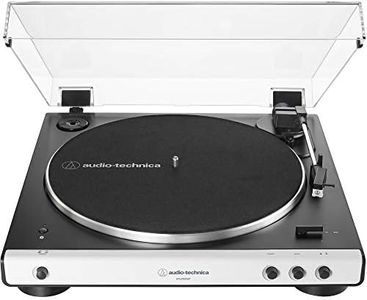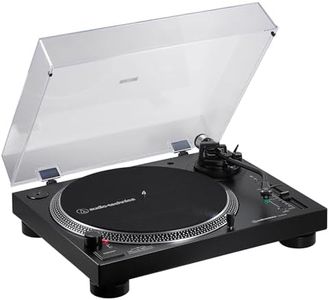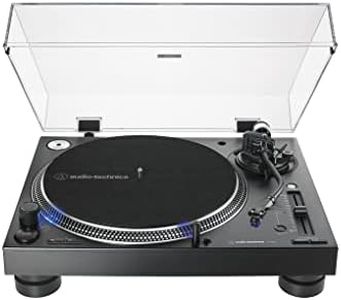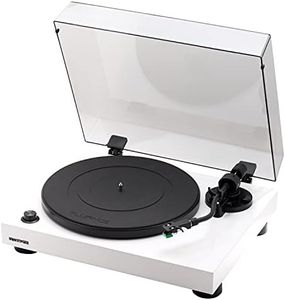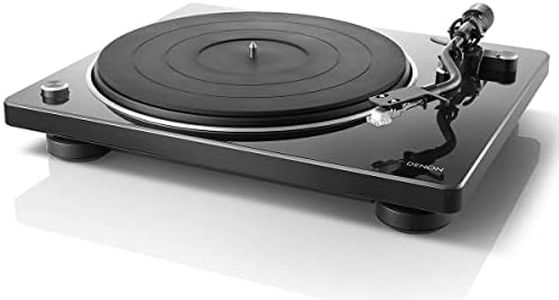We Use CookiesWe use cookies to enhance the security, performance,
functionality and for analytical and promotional activities. By continuing to browse this site you
are agreeing to our privacy policy
10 Best Inexpensive Turntables
From leading brands and best sellers available on the web.Buying Guide for the Best Inexpensive Turntables
When looking to buy an inexpensive turntable, it's important to focus on the basic features that will deliver good sound quality and reliability without unnecessary extras. The right choice will depend on whether you're a casual listener, a vinyl beginner, or someone hoping to get a bit more from their records. Think about how you'll use the turntable: Do you need something easy to set up? Are you planning to connect it to modern speakers or an older sound system? Knowing your primary need helps narrow down your options.Drive TypeThis refers to how the turntable platter spins. The two main types are belt-drive and direct-drive. Belt-drive uses a rubber belt to spin the platter, which can reduce vibrations and is typically preferred for listening at home. Direct-drive connects the platter directly to the motor, which is more durable and often used for DJing. For most budget buyers, a belt-drive is a safe choice for listening, while those considering DJ use might prefer a direct-drive model. Think about your primary use and choose accordingly.
Built-in PreampA built-in preamp amplifies the signal from the turntable so you can connect it directly to powered speakers or standard audio systems. If you don't have a receiver or amplifier with a dedicated 'phono' input, a built-in preamp makes setup much easier. If your gear already has a phono input, you may not need this feature. Consider your current audio setup; if you're unsure, a model with a built-in preamp gives you more flexibility.
Cartridge TypeThe cartridge holds the needle (stylus) that reads the grooves on your records. Some turntables have fixed (non-replaceable) cartridges, while others use standard mount cartridges you can upgrade later. A basic, built-in cartridge may be fine for casual use, but if you want better sound quality or plan to upgrade over time, look for one with a replaceable cartridge. Think about whether you want to tinker and upgrade later or just enjoy your records as soon as you set up.
Automatic vs. Manual OperationAutomatic turntables can lift the tonearm and start or stop playing at the push of a button, which is very convenient for beginners. Manual turntables require you to move the tonearm yourself, offering more control but needing more attention. If you value convenience and a lower chance of damaging your records, automatic is a good fit. If you want a hands-on experience and don't mind the extra effort, manual operation may appeal more to you. Semi-automatic models are a middle ground.
USB OutputSome turntables offer a USB output that lets you connect to a computer and digitize your vinyl records. This is handy if you want to make digital backups of your collection or listen on other devices. If digitizing your music is important, look for this feature. If you're only interested in playing your records through speakers, you can skip it.
Build Quality and Platter MaterialBuild quality affects how stable and reliable your turntable will be. Heavier materials and better construction can reduce unwanted vibrations and noise. Platter materials vary from lightweight plastic to heavier metals; heavier is generally better for smooth spinning and sound. Cheaper turntables often have lighter build, so look for the sturdiest option you can find in your price range. If you plan to use your turntable regularly or care about sound, don't choose one that feels too flimsy.
